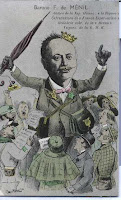Esperanto- The Language With an Anthem
 The only language in the world with its own flag and anthem, the word "Esperanto" translates as "hope" or "hoping one" and also provides the title of the anthem of the language. The anthem speaks of the goal of the language, to bind the nations together with a common language in peace.
The only language in the world with its own flag and anthem, the word "Esperanto" translates as "hope" or "hoping one" and also provides the title of the anthem of the language. The anthem speaks of the goal of the language, to bind the nations together with a common language in peace.
Esperanto is the only constructed language with native speakers, that is, people who learned it from their parents as one of their native languages. Estimates range from 10,000 to two million additional active or fluent speakers. Usage is particularly high in eastern and northern Europe, eastern Asia, Brazil, and Iran. A World Congress of Esperanto was organized in France in 1905, and since then has been held in various countries every year apart from during the world wars.
Although no country has adopted it officially, Esperanto was recommended by the French Academy of Sciences in 1921, was recognized by UNESCO in 1954, and is currently the language of instruction of a university in San Marino. There is evidence that learning Esperanto may provide a superior foundation for learning languages in general, and some primary schools teach it as preparation for learning other foreign languages.
The words were among the first Esperanto poetry, written by Dr. Zamenhof, the inventor of the Esperanto language, and the melody was especially written by French composer Félicien de Ménil (July 16, 1960- March 28, 1930). It is played at the opening of congresses. An interesting coincidence is that this anthem has the same title as that of the anthem of Israel, perhaps explained by the fact that Dr. Zamenhof was Jewish.
The picture above features the composer, Felicien de Menil, in a series of caricature postcards in 1912.






